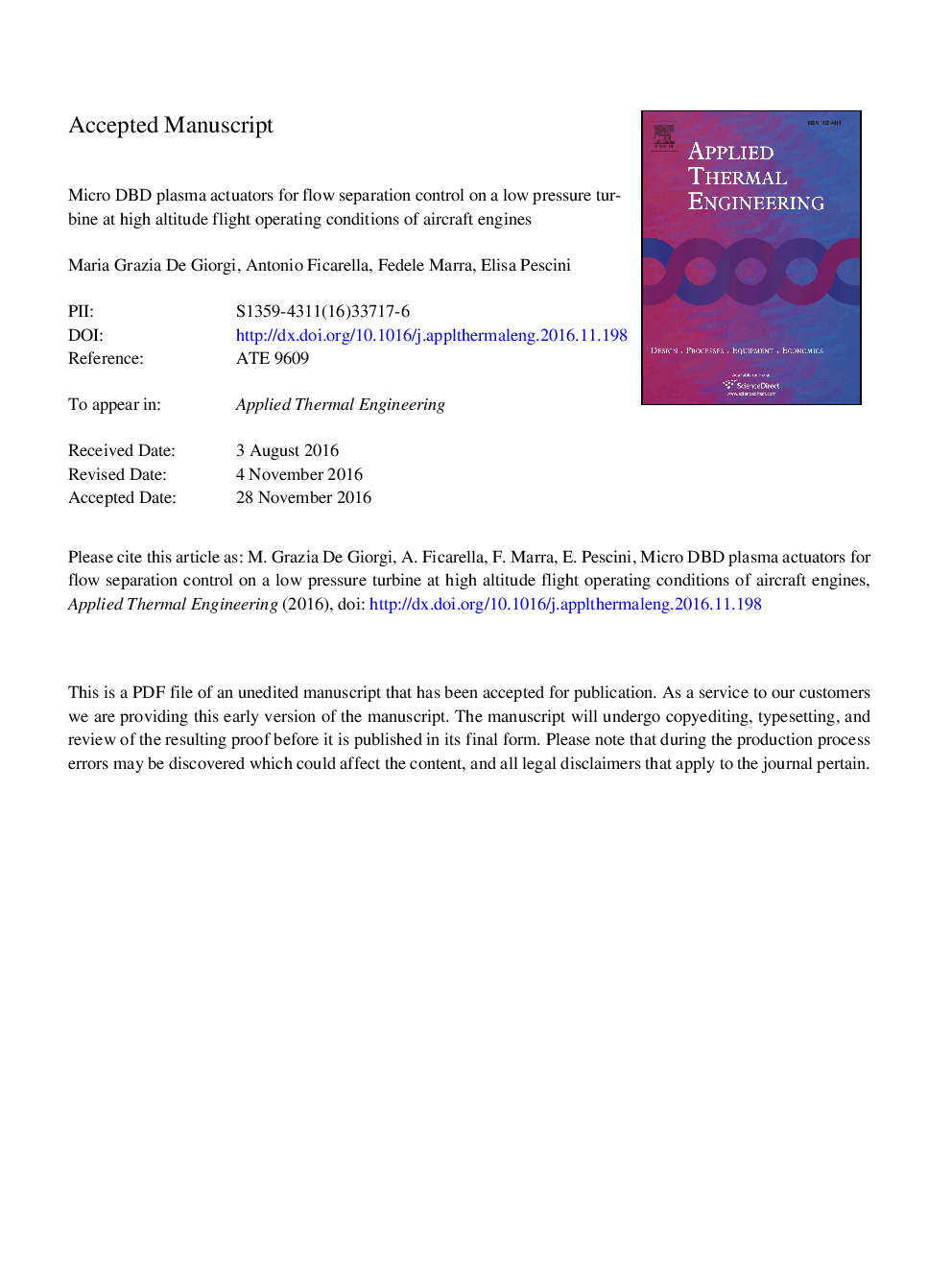| Article ID | Journal | Published Year | Pages | File Type |
|---|---|---|---|---|
| 4991974 | Applied Thermal Engineering | 2017 | 32 Pages |
Abstract
The present study aims to investigate, by numerical simulations, the potentiality of alternate current (AC) driven plasma actuators to reattach the separated flow along a low pressure turbine blade operating at low-Reynolds number. The flow over a curved wall plate, installed in a wind tunnel, to simulate the suction surface of a low-pressure turbine blade, was examined. Different plasma actuator geometries have been studied: a macro single dielectric barrier discharge (SDBD), a micro SDBD and a micro linear plasma synthetic jet (L-PSJ) without and with thrust vectoring. Numerical simulations were performed in absence and in presence of actuation. In presence of actuation, the plasma induced force was modelled and introduced as a source term in the momentum Navier-Stokes equation. The numerical flow simulations were validated with the experimental data. To compare the different plasma actuator geometries effects, the velocity profiles have been considered. The micro SDBD and the micro L-PSJ with thrust vectoring led to a reduction of recirculation and a substantial decrease of the boundary layer thickness. The reattachment of the flow was also evident by analyzing the wall shear stress profiles and the vortical flow structure using the Q-criterion. The characteristics of the boundary layer (shape factor, displacement and momentum thickness) in presence of the different actuation techniques were also studied.
Related Topics
Physical Sciences and Engineering
Chemical Engineering
Fluid Flow and Transfer Processes
Authors
Maria Grazia De Giorgi, Antonio Ficarella, Fedele Marra, Elisa Pescini,
